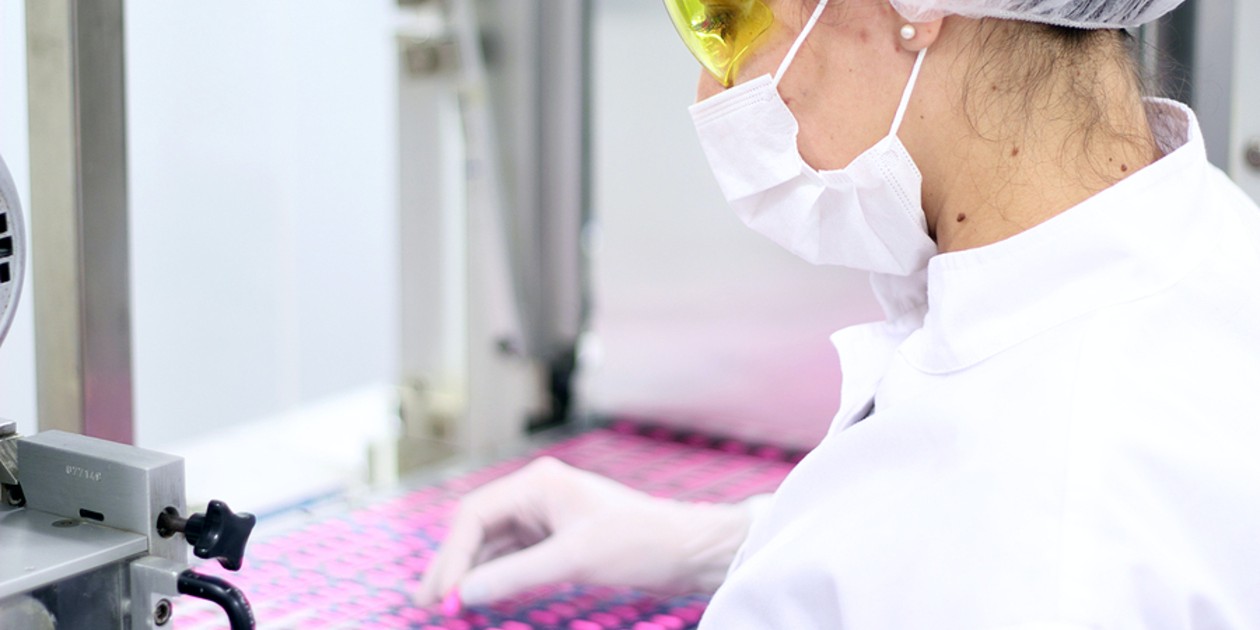
What would you say is the biggest problem in the pharma supply chain today? Some might point to ever-growing complexity, changing customer demand, cybersecurity threats, as well as stricter regulations. However, the right answer isn’t any one of those things – it’s a combination of all of them.
How can the pharma supply chain become more efficient, while overcoming these obstacles in a cost-effective manner? The answer lies in pharma B2B integration.
Read on to learn what it is, why it matters, and what’s at stake for pharma companies in a highly competitive landscape.
What Issues Does the Pharma Supply Chain Face Today?
The pharma supply chain faces four major issues:
- Growing complexity
- Changing customer demand
- Cybersecurity threats
- Stricter regulations
The Growing Complexity of the Pharma Supply Chain
The pharma supply chain differs from that of other industries because of the product. Manufacturing and distributing drugs sometimes requires the use of dangerous chemicals and highly specific shipping conditions.
In recent years, the complexity has only increased. Scientists have developed more complex molecules (which also require more synthesis). The time to production is also longer than in many other industries: it can take as long as two years to produce a drug. Additionally, there are more suppliers in the pharma supply chain, and they’re located across the world.
Changing Customer Demand
Today’s consumers are more vocal than ever. They want personalized, high-tech care, and they want it delivered to their homes, at their convenience.
These demands put pressure on pharma companies, whose supply chains have been more traditional (think selling finished products to retailers). Consumers are also demanding direct contact with pharmaceutical companies, something that was previously unheard of.
Cybersecurity Threats
Cybersecurity can’t be overlooked in the pharma supply chain. In 2017, Merck was hit by NotPetya, which disrupted the firm’s global operations. The company halted production, which led to a $300 million in Q3 2017. Roche and Bayer have also been victim to cyberattacks (specifically Winnti, malware tied to the Chinese government).
As evidenced by the attack on Merck, cybersecurity threats to the pharma supply chain are expensive and damaging. Hackers could steal proprietary information and sell it to competitors or to foreign governments. Additionally, if hackers steal customer data, customers lose trust in your firm, which deeply damages your reputation.
Stricter Regulations
The global nature of the pharma supply chain means that regulations in places where drugs are manufactured may not be the same as where they’re consumed. To protect consumers, governments have enacted legislation that makes it easier to track and trace drugs.
In the US, the 2013 Drug Supply Chain Security Act created an electronic system to identify and trace drugs, right down to a single package. Over the past several years, the FDA has rolled out additional provisions, including product identification, lot-level product tracing, a system to verify and handle illegitimate products, and trading partner confirmation.
“To protect consumers, governments have enacted legislation to make the pharma supply chain safer.”
The EU’s Falsified Medicines Directive of 2011 mandated a track-and-trace system that uses a 2D barcode and anti-tampering devices. Brazil is also making efforts to increase traceability in the pharma supply chain; manufacturers can expect tighter restrictions on packaging in the coming years.
B2B Integration in Pharma: Fueling the Pharma Supply Chain
What can pharma companies do to reduce complexity, meet consumer demands, stay safe, and adhere to regulations? The answer lies in pharma B2B integration.
Pharma B2B integration refers to B2B integration solutions that meet the specific needs of the industry:
- Efficiency
- Scalability
- Traceability
- Flexibility
Pharma B2B Integration: Greater Efficiency
Pharma B2B integration enables greater efficiency in the pharma supply chain because it provides greater visibility into your processes. B2B integration eliminates the need for manual processes – no more emails, faxes, or speaking to people over the phone. Computers send information back and forth, which drastically reduces errors.
Because B2B integration relies on computers to transmit information electronically, you can see everything that’s going on in one place. You’re not guessing if a shipment has gone out, or if the customer is ready to receive the shipment. With greater visibility, you can work faster and smarter – you can order the right amount of inventory, get paid sooner, and make the right business decisions because you have up-to-date information from your trading partners.

Scalability
Another benefit of pharma B2B integration is that it’s scalable. A B2B integration solution grows with your business so it can accommodate new trading partners as well as new integrations.
You don’t want to be limited to how many trading partners you can add to your network. Moreover, you want to integrate with a large number of information sources for greater visibility, as we discussed above.
Traceability
To satisfy regulatory requirements, pharma manufacturers must be able to trace raw ingredients as well as finished products throughout the pharma supply chain. Pharma B2B integration enables efficient traceability. We’ll illustrate with an example.
Davis Pharmaceuticals manufactures aspirin. They purchase corn starch from Kearney. Both companies use pharma B2B integration. When Davis orders corn starch from Kearney, the purchase order is transmitted directly through a B2B integration solution, so there’s no manual data entry. Here’s where the traceability aspect comes in: when Kearney fulfills the order and sends Davis an advance ship notice, the ASN includes lot numbers for the corn starch.
“Pharma B2B integration enables efficient traceability.”
Let’s say that there’s a problem with the corn starch. Because of those lot numbers, Davis can pull the affected aspirin before it even gets to the shelves.
Flexibility
Another important advantage that pharma B2B integration offers is flexibility. What do we mean by that? In this case, a B2B integration solution is flexible enough to integrate with a variety of information sources, including those that are cutting-edge.
Today, shipments may be equipped with IoT sensors that transmit information about temperature and other shipping conditions. AI can predict market conditions, while social media is a valuable source of customer sentiment. Pharma B2B integration solutions work with these data streams so that companies have access to the latest information and can make the best business decisions.
What’s at Stake for Pharma Companies?
To understand how crucial pharma B2B integration is, let’s take a look at what’s at stake for pharma companies:
- Meeting customer demand
- Complying with regulations
- Staying secure
- Staying competitive and relevant
Meeting Customer Demand
Consumer demand is changing. Consumers expect more from the companies with whom they do business, including pharma firms. B2B integration in pharma allows companies to meet this demand.
With pharma B2B integration, pharma companies can utilize B2B connectivity so that they can sell directly to consumers. With the visibility that B2B integration solutions provide, manufacturers know exactly what’s going on within the pharma supply chain to fulfill their customers’ requests.
Complying with Regulations
Pharma B2B integration helps firms comply with regulations, so they avoid costly regulations and reputational damage. How so?
Complying with regulations means being able to track raw ingredients as well as finished products throughout the supply chain. Pharma B2B integration can do that because it enables traceability throughout the supply chain. Because information is transmitted electronically, there’s no concern about error stemming from manual data entry.
Staying Secure
Pharma companies are not immune to security risks. In fact, they make highly attractive targets, as we discussed earlier. To that end, security is paramount – it not only keeps information safe, it boosts stakeholder trust.
B2B integration in pharma prioritizes security. These solutions protect information as well as companies’ digital infrastructure by alerting administrators to security risks. Moreover, market-leading B2B integration platforms self-update, which saves companies the time and effort of manually upgrading software that protects against vulnerabilities.
Staying Competitive and Relevant
One of the most critical capabilities that B2B integration in pharma offers is being able to stay competitive and relevant. How so?
First, let’s discuss the point about staying competitive. In the case of the pharma industry, competitive means being able to effectively and efficiently manage a complex supply chain while keeping confidential and proprietary information safe, and while complying with government regulations, and while meeting customer demands. There are many moving parts involved in staying competitive, and if you lose sight of one, a host of negative consequences could follow.
“B2B integration in pharma allows companies to stay competitive and relevant”
What is “relevancy”? It goes beyond competitiveness – relevancy is about how well you match your customers’ needs in a crowded marketplace. If you can’t do that, you’ll find yourself being pushed out of the marketplace by companies that can meet customer needs.
B2B integration in pharma helps companies achieve both of these aims by enhancing visibility into the pharma supply chain, maintaining high levels of security, increasing traceability to comply with government regulations, and allowing companies to enter new channels so they can sell directly to consumers. Pharma companies can effectively compete in a complex marketplace while ensuring that their brand stays front and center in customers’ minds for years to come. Are You Ready to integrate?




